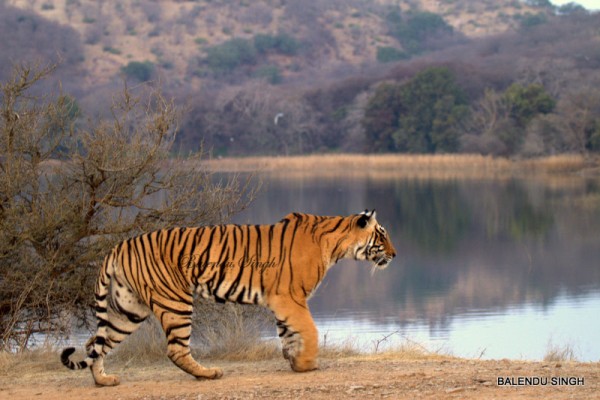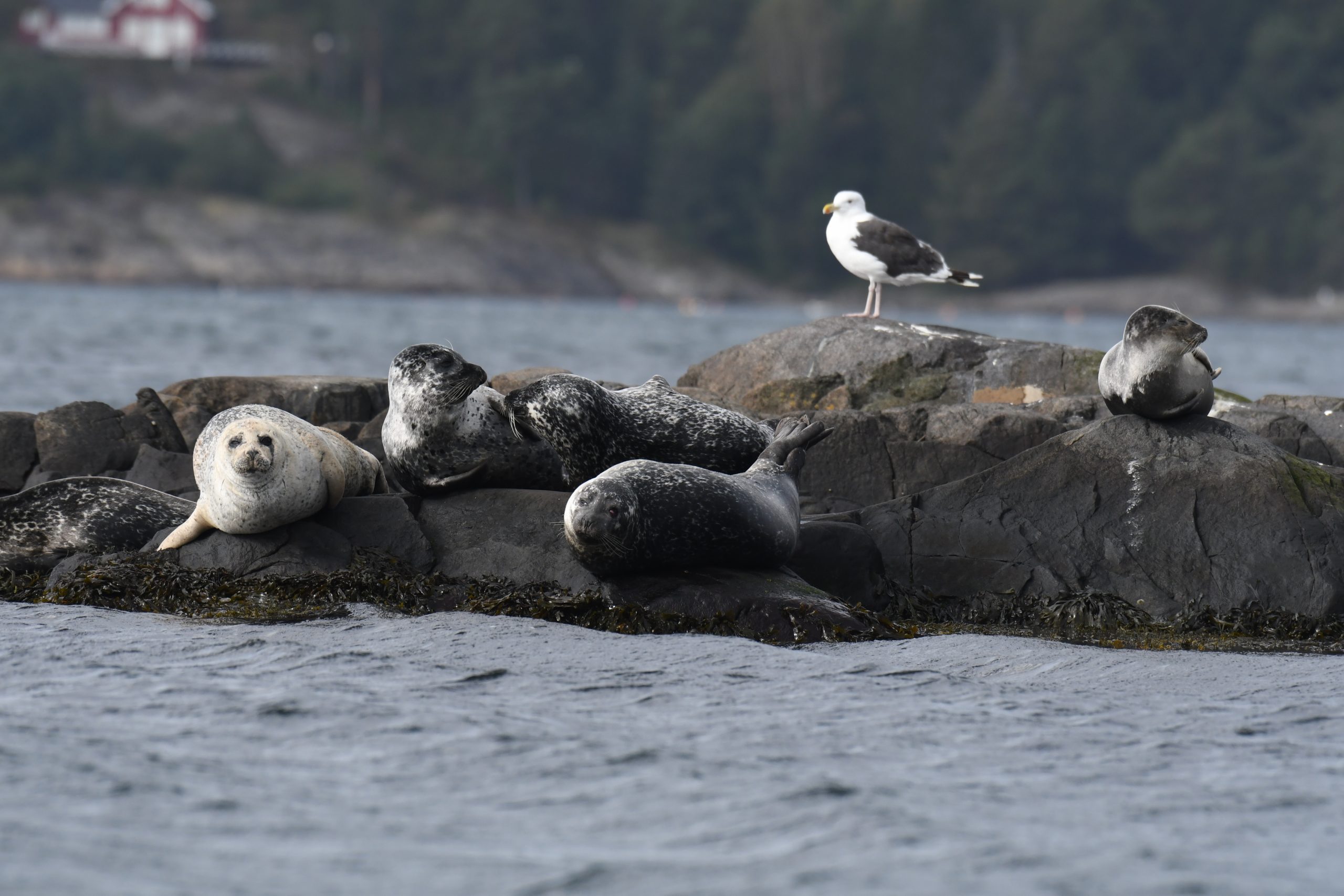

Raet national park was established in 2016 at the South-Norwegian Skagerrak coast, right at the doorsteps of Linking Tourism & Conservation’s (LT&C’s) office in Arendal. With its 607 km2, it is Norway’s largest marine protected area (MPA). The planning time of this park has been with only four years the shortest of any national park in Norway. This success has been achieved through the political support of the involved municipalities Tvedestrand, Arendal and Grimstad. And it certainly was also triggered by the slogan’s the former governor of the region, Øystein Djupedal, used to push the process: It should become the „world’s finest national park“, and it should be „protection through use“. To strive for superlatives is common in Norway. But that the two different goals are not compatible with each other was not playing a significant role.
Norwegian readers continue here
However, openings on the horizon appear that this contradiction can at least be softened. The new goal could be to make it the country’s first marine national park meeting international standards and thereby „Norway’s finest“. The other solution is to define the kind of „use“, which fits with the protected area criteria of a national park, and to start a spatial planning process in this regard.
As GRID-Arendal’s report on the „State of the Environment in the Raet National Park“ describes, Raet was established in recognition of the cultural and geological significance of the coastal landscape left behind when the Scandinavian ice sheet withdrew after the last ice age, approximately 10,000 years ago. The term “raet” refers to glacial moraine deposits comprised of cobble- to boulder-sized gravel. The underwater seascape, dominated by glacial moraine areas and productive kelp forests, is an area of high biological diversity, including fish, crustacea, benthic algae, molluscs and worms. In sheltered and shallow-water coastline areas, soft-bottom habitats and eelgrass and mudflat communities occur.
As flagship species, lobsters are distributed in rocky habitats and are in particular productive in some small research plots the local Flødevigen laboratory of the Norwegian Marine Research Institute has established. From the spill-over effect, local lobster fishers are benefitting. Typical marine mammals are harbour seals and harbour porpoise. On several of the islands and skerries, special seabird sanctuaries protect cormorants, terns and different species of gulls, ducks, geese and shorebirds during their breeding season. A typical songbird is the rock pipit.
Norway is a leading marine and fishery nation and a world champion in supporting UN-Environment, including the UN Convention on Biological Diversity (CBD). Still, it ranks lower than many developing countries when it comes to marine protected areas or national parks meeting international standards. Of its entire mainland territorial waters, along its 28 953 km (including 240 O00 islands even 100 915 km long) coastline, Norway has protected only 3,1% as MPA. And even in the highest-ranking form of an MPA and the largest of all, Raet national park, there are hardly any no-take (no-fishing) zones. Hunting and fishing are allowed almost in the entire national park (as in all other national parks in Norway), although the existing lobster research reserves illustrate the positive effects for the biodiversity inside these areas as well as the spill-over benefits for the fishery in the surrounding waters. The UN goal for 2020 was to protect at least 10% of the global marine waters, and no-take zones are an internationally agreed important instrument to reverse the present dramatic trend of decreasing biodiversity, mainly caused by fisheries. And Norway within the Ocean Panel of 14 leading marine countries has just committed to the target to protect by 2030 30% of the global oceans.
This recent commitment of Norway adds to other positive signs, which are upcoming locally: With support from local municipalities and tourism businesses, Raet could become the first example for Norway of a national park meeting international standards. Ideas and visions for such a development were exchanged already in an LT&C-workshop two years ago. Proposals reached from more educative involvement of visitors, employing rangers, boat traffic regulations including “silent zones”, banning specific fishing gear such as gillnets, increasing no-fishing zones til facing out any waterfowl and marine mammal hunting. Now even the national park board (nasjonalparkstyre), which steers the national park management and consists of representatives of the three local municipalities as well as of different user interests, made up its mind for better protection. They are seeking support for a process of identifying measures for improving the marine nature values of the park. Maybe some recent eye-openers have triggered this: Local divers and marine scientists engaged in a cleaning project of the seafloor and brought up an enormous amount of lost fishing gear. A lobster overfishing scandal in Grimstad filled the pages of the regional newspaper. The drowning of high numbers of harbour porpoises in gill-nets caused headlines in national papers. And the fact that even the fishery ministry had to close the fishing of cod due to overfishing problems caused some new thinking. People also looked on the positive effects of the lobster research reserves as well as at an initiative of Tvedestrand establishing a no-fishing test zone in their local waters.
The waters and natural values of Raet national park are increasingly known as an attractive holiday area and local recreational use. Tourism businesses benefit from and should be interested in preserving the natural values of the area. And as recreational and educative use is also in line with the role of national parks, political support from tourism could be decisive for making new spatial planning of different kinds of use- and no-take zones possible. Suppose tourism representatives, among other stakeholders, would support spatial planning for establishing large no-take zones and other MPA measures. In that case, Raet could become the first and „finest“ national park and LT&C-Example in Norway.
Goals to be supported could be:
It should not be too difficult to reach these goals in collaboration with local stakeholders and involving local research capacities such as the Flødevigen laboratory of the Marine Research Institute or GRID-Arendal.
There is a first discussion and movement, including the local municipalities and tourism businesses supporting a new spatial planning process. It needs now broader support from local and national civil society.
Suppose Raet would become the first national park in Norway without hunting und with large no-take zones, where natural processes could thrive without disturbance from human impacts. In that case, this could become the blueprint for other national parks in Norway. It could also provide a stronger argument if Norway assists developing countries in meeting the biodiversity goals of the United Nations.
If you can support this vision, please
© Linking Tourism & Conservation (LT&C) 2019
We are grateful that you support the work and mission of LT&C! We accept donations through Credit Card, PayPal or international bank transfer:

Donate through Credit Card
Please click the Donate button and then choose your PayPal account
Bank details:
Cultura Sparebank
Pb. 6800, St. Olavs plass
N-0130 Oslo
Name: Linking Tourism & Conservation,
Account no.: 1254 05 95168
IBAN: NO8712540595168
BIC/SWIFT: CULTNOK1
Routing BIC: DNBANOKK
Please mark payments with your name and/or email address
Sign up for an LT&C membership by filling in the details below.
Would you like your LT&C-Example/Initiative to be listed on our website? Please fill in the form below.